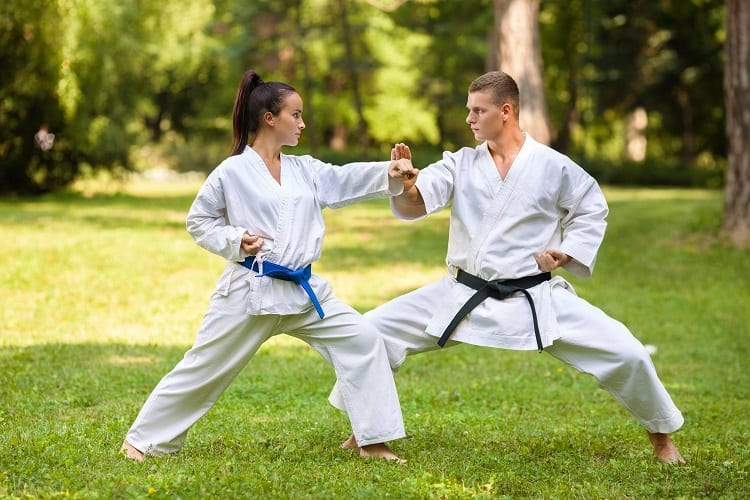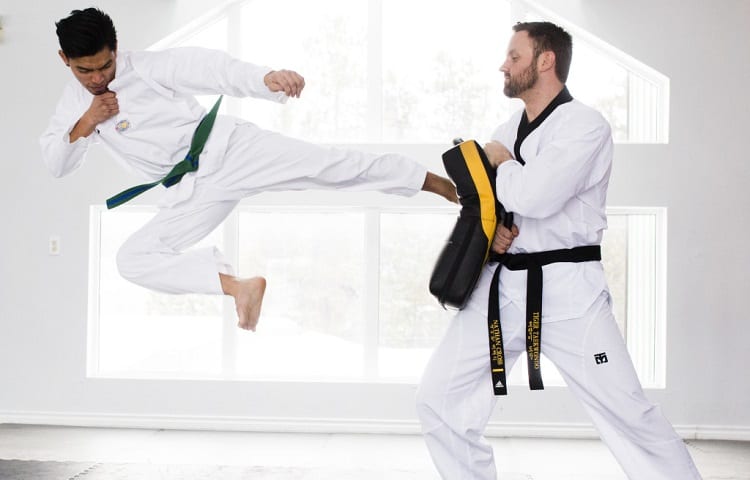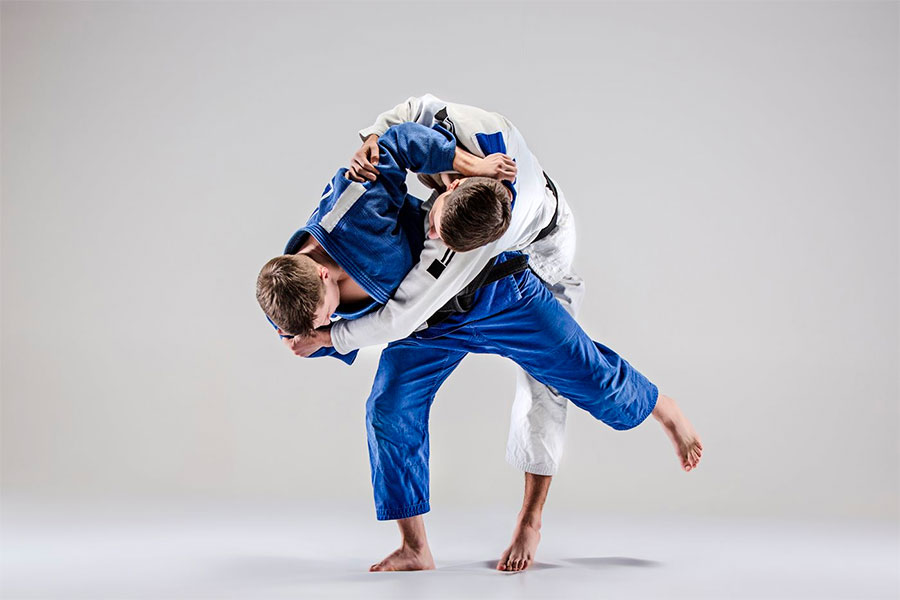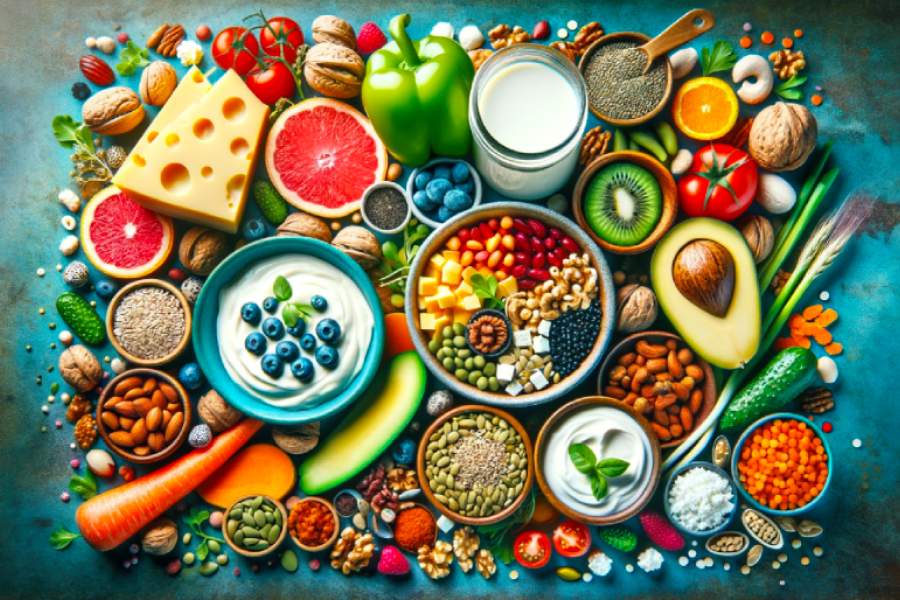
Bodybuilding is an excellent way to decrease the risk of heart diseases while building confidence, determination, and focus. But there’s more to fitness than simply lifting weights and building muscle.
You can take your bodybuilding routine a notch higher by cross-training with martial art forms like Karate, Judo, Taekwondo, and more. These martial art forms can help improve your flexibility, focus, and self-defense abilities.
Overall, cross-training helps to improve your posture and coordination with a variety of cardio, strength, and endurance exercises. It also reduces your chances of getting injured.
But which are the best martial arts for a bodybuilder?
In this article, we’ll help you identify what to look for while making your choice. We’ll also examine the differences between martial arts and bodybuilding. So, let’s delve in.
Table of Contents
How To Pick The Right Martial Art To Cross Train As A Bodybuilder
Choosing the perfect martial art as a bodybuilder can be tricky, especially with the many martial art forms out there. There are, however, certain questions that you need to ask yourself when searching for a martial art form, so let’s take a look at them.
Where Do Your Interests Lie?
Between all the martial art forms out there, which one are you inclined to the most? Do you like boxing? Do you feel grappling might be better?
Are you excited about the idea of learning Karate? You’re more likely to give all out for a form you’re excited about than one you choose for its popularity.
If you’re not certain which combat sport attracts you the most, watch UFC events and notice how you feel about what you see. Striking? Wrestling? BJJ? What drove your attention the most after the fights ended.
What Skills Do You Have?
Interests matter, yes, but what skills do you have, and which martial arts form do they align to? Maybe you enjoy boxing, but you’re better at grappling. Then, it would be more helpful if you took a grappling-centered art form instead of boxing.
Things like your flexibility, explosiveness, cardio level, and previous experiences all play part in deciding which combat sport you might end up training on top of your lifting sessions.
Flexible hips might give you an edge in Brazilian Jiu-Jitsu, while decent footwork and coordination might decrease your learning curve in striking-based combat sports.
What School Do You Choose?
You need to search for schools that are around you. You’re less likely to stop a class if you don’t have to drive for an hour to get to your school. Unless you want to build grit and endurance, in which case long distances can help.
And in case you’re looking for a challenge, you’ll need to figure out if the school is a competitive one or not. Also, you need to consider the training environment by visiting one of the training sessions to decide if it suits you or not.
Martial Arts vs. Bodybuilding, How Are They Different?
At the core, martial arts and bodybuilding have the same endgame: improving physical and mental health. The difference between the two is in their specific needs. Let’s discuss some of them.
Martial Arts
There are basic requirements for martial arts. These requirements include focus, discipline, sacrifice, cardio, muscular endurance, flexibility, and respect.
Additionally, you can master your thoughts and emotions and improve your mental health by practicing martial arts as it aids in developing emotional stability, assertiveness, and self-confidence.
However, there are also challenges to learning martial arts. Here are a few:
- Can be very violent and injuries might happen.
- Some martial arts are not practical in real life.
- Takes a long time to learn the fundamentals.
Bodybuilding
Bodybuilding requires a different of type physical work than martial arts. Here, your typical training would include deadlifts, wide grip pulldowns, and weight sets.
Furthermore, bodybuilding requires strict diet plans to be very effective. You need to increase the quality of your food and decrease the intake of certain foods as well. There are, however, cheat meals that give your taste buds a treat while keeping you in shape.
But there are a few challenges that emerge from bodybuilding, including:
- Progressive overload in your lifts might cause injuries.
- Risk of cardiovascular disruption.
- Is it possible develop mental disorders like vigorexia.
Weightlifting And Martial Arts
Despite popular belief, size and power matter in any combat sport. That’s the main reason why there are weight classes. As a martial artist, you can benefit from weightlifting by developing muscles that are neglected in regular combat sports classes.
Weightlifting can tip the scales in your favor. Here are a few extra advantages to lifting weights as a martial artist:
- Rebalances your body.
- Gives you more power.
- Builds endurance.
The stronger you are as a whole, the more dominant you can be in other aspects of the combat sports game like wrestling, or striking.
On the other hand, weightlifting can put a lot of strain on your body, and the more you continue to abuse the body, the more susceptible to injury you become.
Many gym lovers tend to neglect other aspects of fitness like longevity, flexibility, and mobility. Those are elements that are encouraged in martial arts dojos all over the world.
Best Martial Arts For A Bodybuilder To Try
There are martial art forms that can help you lose some weight. They include:
Karate

Karate is a martial arts style that relies on striking and kicking the opponent. That being said, Karate is known for its formality and strict discipline among practitioners.
Another thing to note about Karate is that it traditionally only has one true beginner technique: the punch. So if you’re looking to learn how to punch or how to block one, then Karate may well be the perfect martial art for you!
For bodybuilders, Karate is the perfect martial art to try if you’re interested in gaining hand-eye coordination and speedy reflexes.
Pros
- Equips you with some self-defense skills.
- Boosts your self-confidence.
- Increases your flexibility and mobility.
Cons
- Training techniques can be ineffective in real-life situations.
- Takes a long time to master.
- Practitioners are injury-prone.
Taekwondo

Taekwondo is one of the world’s most popular martial arts for a reason. Although there are many great martial arts to choose from, Taekwondo is especially good for people who want to do more than fight.
It is considered by many masters of the sport to be one of the best arts for self-defense training due to the brutal kicking techniques.
The taekwondo techniques can strengthen and tone your muscles through repetitive exercises like high kicks, long jumps, and planking. It can be excellent for bodybuilders, as it is a sport that focuses on combat and strength.
Pros
- Grows your self-discipline.
- Helps you set goals and attain them.
- Heightens your self-esteem as well as your muscle strength.
Cons
- Gives a false sense of security becase is focused on sports combat.
- It neglects other aspects of combat, like grappling.
- High risks of head injuries.
Wrestling

Wrestling is a combat sport based on grappling tactics. The objective here is to pin your opponent flatly on the ground.
Wrestling is interesting for bodybuilders because it is a sport where size and power give you a natural advantage even as a beginner. You can control someone at the same level just by knowing how to leverage your size.
Wrestling is one of the best martial arts for bodybuilders because it will help improve your flexibility, jumping ability, balance, coordination, and cardiovascular conditioning.
Pros
- Gives your control over aggression.
- Teaches patience and concentration.
- Develops your sportsmanship.
Cons
- Head and face injuries.
- Shoulder dislocations.
- Dehydration and nutrient deficiency.
Brazilian Jiu-Jitsu

Brazilian Jiu-Jitsu (BJJ) teaches the ability to control a resisting opponent and dominate him till he submits. In BJJ, both opponents start on their feet and fight for the dominant position.
BJJ practitioners use takedowns, throws, and joint locks to take the opponent to the ground and get past guards to gain points and submit the opponent.
Bodybuilders can benefit from BJJ as it gives a deeper understanding of the body, allowing you to overcome larger opponents. It can also help you keep your ego in check as you might find someone half your size can kill you if they want to.
Pros
- Burns up to 500 calories in one standard session.
- Conditions your body and strengthens your muscles.
- Improves your problem-solving skills.
Cons
- Teaches submissions but doesn’t involve striking training.
- Prone to knee injuries.
- Takes time to master the moves correctly.
Krav Maga

Krav Maga is a self-defense system designed for teaching hand-to-hand combat. It teaches lessons about dedication, responsibility, and grace under duress which is essential if you want to lose weight.
Krav might be one of the best martial arts for a bodybuilder to try. Krav can supplement other training by teaching basic hand-to-hand fighting, escape techniques, and self-defense.
Krav Maga might be hard to get into considering its lack of numbers in the U.S compared to almost every other fighting art. The techniques are also taught in a direct manner which lends itself well for bodybuilders to learn.
Pros
- Increases strength through targeted muscle training.
- Improves cardiovascular health.
- Elevates confidence.
Cons
- Encourages fighting by any means necessary, including weapons.
- Lacks focus as you have to learn many different skills.
- Lacks competition.
MMA

Mixed martial arts, or MMA, is a combat sport in which two competitors compete using three primary techniques to gain dominance: striking, takedowns, and submissions. MMA is built for variety and dynamism, which develops motor skills as well as physical abilities.
MMA could be a top martial art for a bodybuilder because it gives excellent endurance, flexibility, and balance. But not only that, but MMA also trains the whole body for combat, including the neck, to stabilize it during striking.
MMA is also a challenging combat sport to learn at first because of its wide range of techniques that require a good amount of training, which is why it’s not that popular among beginners. However, you can learn MMA at MMA schools if you have time to dedicate to workout often.
Pros
- Increases stamina.
- Aids in mood regulation.
- Boosts confidence from the mastery of different skills.
Cons
- Potential for brain trauma.
- It might take you away from lifting if you want to get better faster.
- High risk of lacerations.
Muay Thai

Muay Thai is a full-contact martial art that heavily relies on fists, elbows, knees, and shins. It teaches practitioners to put up the work required to achieve their goals which is an essential lesson if you’re trying to accomplish anything in life.
As a bodybuilder, you might find Muay Thai appealing because of its emphasis on kicking and punches and not just grappling and ground fighting.
As a martial artist, it also teaches you to control your emotions under intense pressure, which comes in handy in other aspects.
Pros
- Improves coordination.
- Improves your self-defense abilities.
- Burns a lot of calories.
Cons
- At its core, it’s about physically hurting your opponent.
- Risk of head trauma.
- Prone to leg injuries.
Judo

Judo requires both physical and mental strength. It is an excellent practice for losing weight as it helps build strong, healthy muscles while boosting cardio and lowering cholesterol.
Judo might attract bodybuilders since it is light on the joints yet still effective in building bulky muscles. The sport also provides effective conditioning for athletes who require better cardio levels.
Many people try judo once and come back for more. People who are new to judo can quickly build up strength, stamina, flexibility, and speed through the sport. For some people, it is more about the love of competition that directs them to undertake judo.
Pros
- Teaches practical self-defense techniques.
- Builds endurance and tenacity.
- Teaches mental toughness.
Cons
- Limited techniques and moves.
- Has many rules.
- Underdeveloped for ground fighting.
Boxing

Boxing is a fistfighting sport in which two people compete against each other. Boxing has traditionally been referred to as “pugilism,” which means “fistfight.” Because it’s such an active sport, it’s an excellent way to reduce weight.
If you like lifting weights, boxing can be an exciting option to cross-train because it involves punches, which are better if you have more muscle mass and power. Boxers develop muscular physiques that have a slight “lean” look to them.
In addition, boxers must also adhere to a strict nutrition plan to reduce weight and recover from heavy workouts. In some instances, professional fighters avoid carbs entirely during the final three weeks of dieting and then slowly enter a carb-loading phase before the fight.
Pros
- IImproves agility and flexibility.
- Improves balance and posture.
- Great cardiovascular workout.
Cons
- Risk of head injury.
- Prone to brain damage.
- Hand injuries are commonplace.
Final Thoughts On The Best Martial Arts For A Bodybuilder
While carrying weights and building muscle is a great way to boost your confidence and self-defense abilities, you can get even better results when you add martial art forms to your training regime. Martial arts improves your speed, focus, discipline, and coordination.
When choosing the kind of martial arts to add to your routine, be sure to consider your interests, skills, and the type of schools available.




